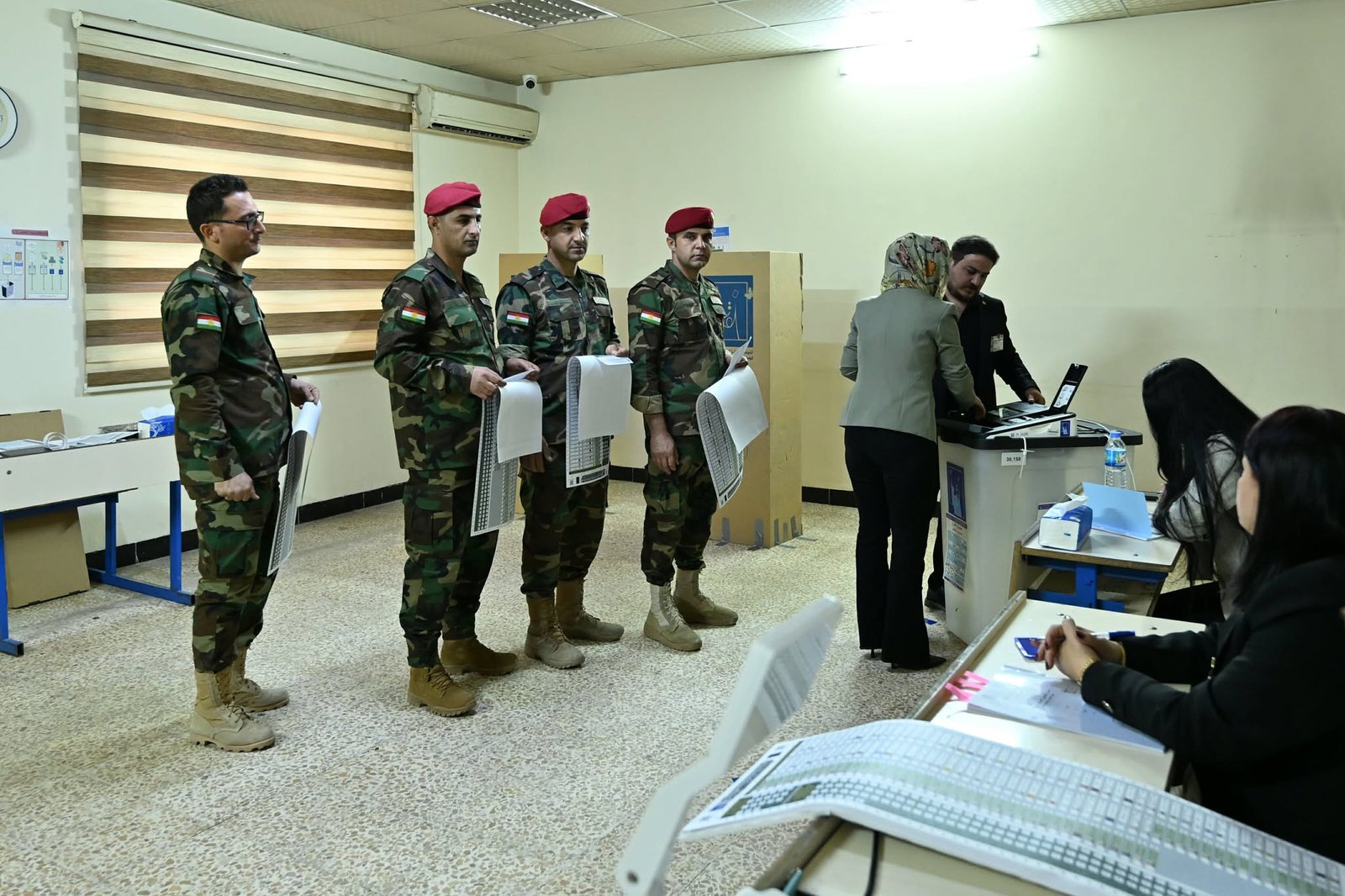Tomorrow’s Iraqi general election: high stakes for KRG cabinet formation and Erbil–Baghdad relations

Iraqis, including voters in the Kurdistan Region, are heading to the polls in parliamentary elections. For the Kurdistan Region, the balance of power between the two ruling parties, the KDP and the PUK, will directly shape the next KRG cabinet and redefine the terms of Erbil–Baghdad relations.
Context: In yesterday’s special voting, which included security forces and internally displaced persons, the KDP topped the Kurdish areas across the Kurdistan Region and disputed territories with 94,666 votes (38.5%), followed by the PUK with 78,230 votes (31.8%). Other parties trailed significantly: Halwest Movement with 7,895 votes (3.2%), Yazidi Cause (contesting in Nineveh) with 6,002 votes (2.4%), New Generation with 4,808 votes (2.0%), Islamic Union with 4,512 votes (1.8%), Justice Group with 1,338 votes (0.5%), and People’s Front with 1,153 votes (0.5%).
Analysis: While special voting cannot be read as a proportional mirror of the general vote, given the partisan alignment of the security forces with both the KDP and PUK, it remains a useful indicator of intra-Kurdish trends and organisational strength.
The KDP appears on track to emerge as the largest Kurdish party, as expected. In parallel, it is pursuing a deliberate strategy to offset potential seat losses under the current electoral system by backing five minority quota candidates. It is unlikely to secure all five, but even winning three would significantly compensate for any losses and potentially bring the party close to, or above, the 31 seats it held in the 2021 term, assuming the rest of its plan holds.
The PUK, for its part, has performed strongly in special voting, recovering much of the ground it lost in 2021 when internal power struggles depressed its turnout. It is also leveraging the Babylon Movement of Rayan al-Kildani, a Christian, pro-Iran militia leader sanctioned by the US for human rights violations, as a tactical instrument against the KDP’s quota strategy. A clear example is Duhok: recognising it lacked the votes to secure a seat there under the current system, the PUK shifted last minute to support the Babylon quota candidate. If Babylon/PUK manage to capture the Duhok quota seat, it would effectively neutralise at least 15,000 KDP votes invested in its own Christian candidate, an important setback given the KDP’s aim to dominate Duhok and Erbil, where the electoral formula structurally favours larger lists.
At the same time, the surge in support for the Halwest Movement is notable. The leading Halwest candidates are firmly anti-KDP and are likely to complicate the KDP’s efforts to present a united Kurdish front in post-election bargaining with Baghdad, particularly on files such as budget, oil, and federal–regional power sharing.
Looking to tomorrow’s general vote, the central benchmark is the KDP–PUK gap. In the 2021 term, the KDP held 31 seats to the PUK’s 18. If this gap narrows, the PUK’s leverage will increase both in KRG cabinet negotiations and in Baghdad coalition talks. If the gap remains at 10 seats or more, the balance will tilt decisively in favour of the KDP.
For KRG cabinet formation, a strong KDP showing would harden its incentive not to concede key portfolios, despite the cabinet deadlock having already lasted more than a year. Conversely, a reduced gap would embolden the PUK to insist on its core demands, above all the Interior Ministry, which has become the main stumbling block. The results will also factor into any renewed intra-Kurdish bargain over federal posts: the KDP has long sought the Iraqi presidency, held by the PUK since 2005, while the KDP has in return held the Foreign Ministry and the deputy speakership of parliament. If the numbers favour the KDP and the PUK maintains its core demands, the KDP may feel empowered to seek support from opposition lists to reach 51 seats, unilaterally form a KRG cabinet, leave PUK-allocated posts vacant, or, if the stalemate endures, push for early elections and dissolution of parliament.
In Baghdad, the size of the KDP–PUK gap will directly influence coalition formation. A stronger KDP outcome would make it an even heavier-weight actor that is difficult to bypass, enabling it to negotiate not only for top federal posts but also for structural guarantees on budget transfers and oil exports favourable to Erbil. If, however, the PUK outperforms expectations, it will push for arrangements that consolidate its own zone, Sulaimani and adjacent areas, in terms of budgetary flows and energy management. Bafel and Qubad Talabani are increasingly seeking to position Sulaimani as a self-styled emirate that can compete with Erbil, which requires attracting investment and delivering visible projects after years of lagging behind KDP-controlled areas. The early signs suggest the PUK is serious about recalibrating this equilibrium, and tomorrow’s results will determine how far it can go.









